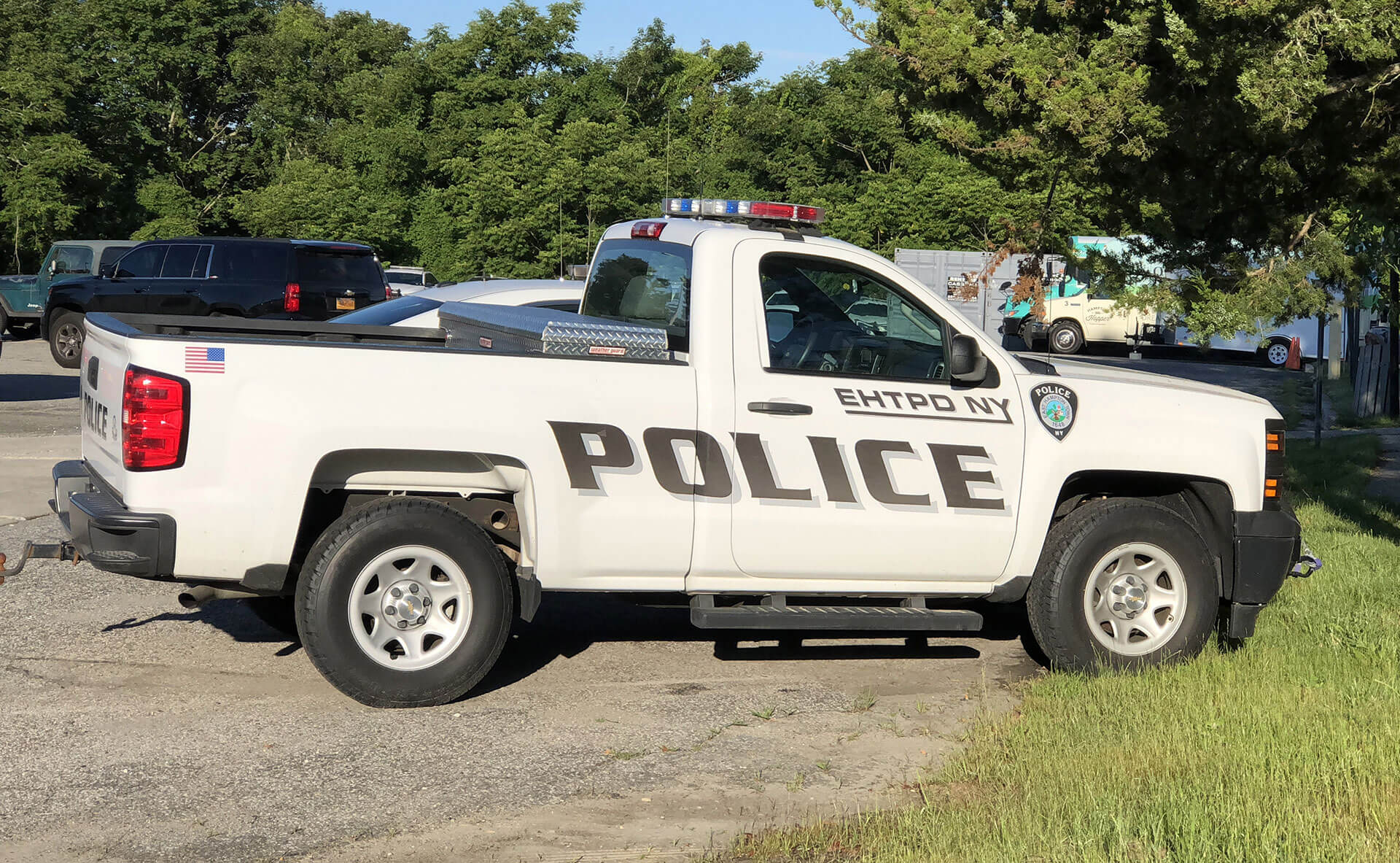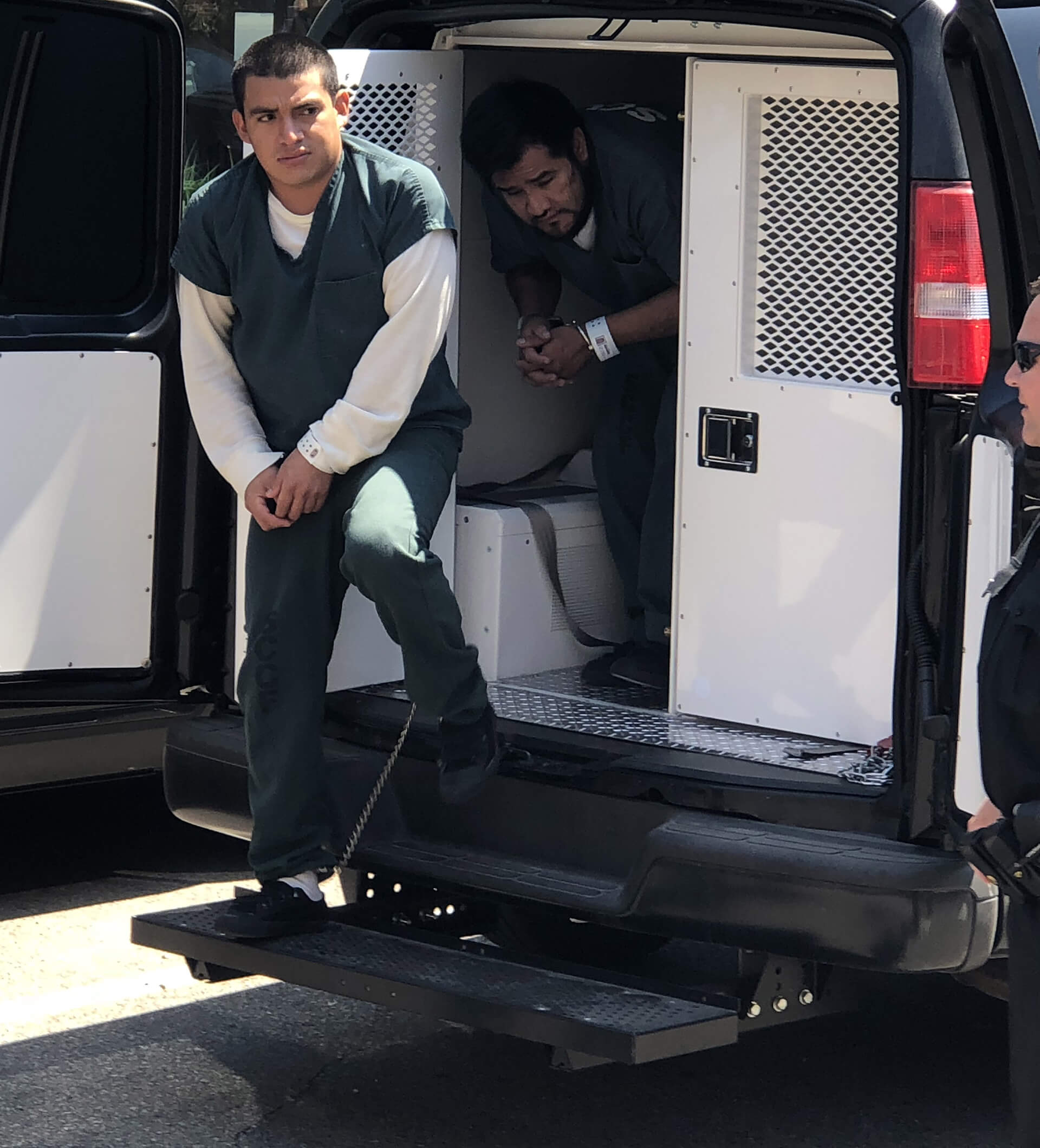Deportations Of Those Convicted Of Crimes Ramp Up


The relationship between the U.S. Immigration and Custom Enforcement agency and the local police, courts, and the Suffolk County sheriff’s office is evolving as deportations of foreign nationals convicted or accused of crimes ramp up. These are five cases out of East Hampton and Sag Harbor justice courts, though there are many more that could be cited.
Two Mexican nationals, Francisco Lauro Mones-Tonacatl, of East Hampton, and Armando Carmona-Romeroof Springs were arrested within 72 hours of each other on drunken driving charges. Mones-Tonacatl, 44, who was working as a chef at Cittanuova Restaurant on Newtown Lane, was arrested by East Hampton Village police; Carmona-Romero, 45, by town police.
For Mones-Tonacatl, the legal stakes were high: because of a November 2008 misdemeanor drunken driving conviction, he was charged with the same crime but as a felony, along with a felony charge of unlicensed driving. In addition, his breath test at headquarters had allegedly produced a .20 of one percent reading, indicating a blood alcohol level high enough to trigger an aggravated felony drunken driving charge. It was the third time he has been arrested on drunken driving charges.
Carmona-Romero, on the other hand, was charged with drunken and unlicensed driving as misdemeanors. He had a prior arrest on drunken driving charges in 2010, and his license had been suspended for failure to pay child support, according to police.
Unknown to East Hampton Town Justice Lisa Rana and the two men’s attorney for their arraignments, Matthew D’Amato of the Legal Aid Society, ICE had sent the two police departments requests to detain the defendants if they should post bail. Justice Rana set bail for Mones-Tonacatl, given his record and the felony level of the charges, at $5000. Family members in court said they would raise the money. Carmona-Romero’s bail was set at $500. The same promise that bail would be posted was made.
It is now customary in East Hampton Town Justice Court, whenever there is any question about the immigration status of a defendant, for local attorneys to advise them to post bail right away. That is because, while the local police departments usually do not honor administrative detainer requests, it is the stated policy of the Suffolk County sheriff’s department to always do so. “Suffolk County has been great” about honoring all detainer requests, Rachael Yong Yow, a spokesperson for the federal agency, said last week.
While bail was posted for both men, neither was released. Instead, both were turned over to ICE agents.
Carmona-Romero was taken to a holding facility in Bergen County in New Jersey. Before a federal immigration court can hear such a deportation case, the local charges must be adjudicated. To do that, the defendant must be brought back to county jail. Even though they are in county jail, they still are in ICE custody: the federal agency rents more than 100 beds at the Suffolk County in Riverside for just such occasions.
On July 5, Carmona-Romero pleaded guilty in East Hampton to a misdemeanor charge of driving while intoxicated. He is now back in the Bergen County facility. He has had one teleconference immigration court hearing since then, with another scheduled. Immigration court hearings have recently been switched to teleconferencing. That change was made, Yong Yow said, after several incidents at which protestors shoved not just officers but detainees. The changed format of hearings will continue “into the foreseeable future,” she said.
Mones-Tonacatl’s case will not be so easy to resolve. Felony charges can only be heard at the county level. The Suffolk County District Attorney’s office has two choices in such a case: reduce the felony charges to misdemeanors that can be resolved locally, or obtain an indictment from a grand jury and proceed in county court.
Mones-Tonacatl, who was indicted May 23, hired attorney Trevor Darrell. Darrell, working with the district attorney’s office, had Mones-Tonacatl turned back over to the county, in order to resolve the felony charges. Darrell believes his client has a chance to be allowed by an immigration court to remain in the U.S. “He has a wife and two children, and 10 years of paying into Social Security,” the lawyer said Monday.
Mones-Tonacatl was due back in county court Tuesday.
If and when a judge orders either or both men to be deported, as Mexican nationals, they will be taken on “domestic flights to Southern tier cities such as San Diego and Brownsville, TX. They would then be bused across the U.S.-Mexico border,” according to ICE.
Two Guatemalan nationals, Antonie Chin, 38, also known, according to ICE, as Antonie Chin-Sabon, and Hector Anibal Suroy Velasquez, 25, also known as Eduardo Velasquez, 24, were arrested, with two other men, by Sag Harbor Village police on trespassing charges June 5. According to Velasquez’s attorney, Rita Bonicelli, the men thought they were entering the house of the owner of a landscaping company on Rysam Street, only to be greeted by an angry homeowner who was not the man they were looking for, along with his German Shepherd. Police were called, and trespassing charges were pressed. Bail was set at $500 for each, and, when it was not posted, they were turned over to Suffolk County sheriffs.
Chin had a prior arrest on a 2015 assault charge. An administrative ICE detainer request was filed against him after his June arrest.
An administrative detainer request is not a court-issued document. It is a request by an ICE official to hold individuals for 48 hours after they would normally be released, to allow ICE time to come and pick them up.
Velasquez’s situation was different from Chin’s. He was facing two misdemeanors, trespassing and a charge for presenting police with a false identity at the time of the initial arrest.
A judicial order of final removal had been issued against Velasquez in 2011 resulting in his deportation. Once such an order is issued, Yong Yow explained, it essentially remains in effect, and can be invoked without the need for judicial review, if the defendant is found inside the country again without having made legal entry. In other words, Velasquez would be deported, with no legal recourse. First, though, the local charges had to be resolved.
The deportation process presents thorny challenges to local judges. Besides sitting in East Hampton, Justice Rana presides in Sag Harbor, as well. Essentially, the hands of a local judge are tied. Once the defendant is in the custody of the Suffolk County Sheriffs Department after an ICE retainer request is issued, a judge cannot free a defendant, even if he or she want to.
In the case of Velasquez, he will be deported. It is just a matter of when. The crimes he was charged with in Sag Harbor, as a first-time offender, would usually be punished in the form of a fine or a short jail term. In fact, prosecutors were offering a plea bargain that would have allowed Velasquez the opportunity to plead guilty to the trespassing charge with a penalty of time served.
Velasquez, and Bonicelli, were ready to enter a guilty plea on July 6. But, there was a catch, and again, Justice Rana’s hands were tied by the law. In a 2010 U.S. Supreme Court ruling, Padilla vs. the State of Kentucky, the Supreme Court found that, before entering a guilty plea to a crime, a defendant with problematic immigration status must be informed by an attorney versed in immigration law, either directly or through their criminal defense attorney acting as a conduit, the deportation ramifications of such a plea.
Bonicelli was appointed as Velasquez’s attorney by the court through a process known as 18B, a rule that covers co-defendants who are indigent. Bonicelli is an attorney in private practice. In the trespassing case, there were four defendants, meaning four different attorneys would be needed. Legal Aid had already taken on one of the other two defendants, so the court had to appoint private attorneys for the remaining three, including Chin and Velasquez. In turn, from what was said in court, there appeared to be a conflict between the immigration attorneys, with Justice Rana in exasperation urging them to work out their differences. She had no choice but to push Velasquez to her next calendar date, July 20, in order that he could consult with an immigration lawyer.
On July 20, Justice Rana asked Velasquez if he had spoken with an immigration lawyer. He replied that he had. She asked if he understood that entering a guilty plea to a crime could have a detrimental effect on his immigration status. He said he understood. After pleading guilty to the trespassing charge, Velasquez was taken back to county jail in Riverside, where he was turned over to ICE. He was then taken to a Hudson County correctional facility, where ICE also rents cells. From there, he was scheduled to be flown to one of the hub cities for ICE Air Operations, which is known as ICE Air. Those cities include Mesa, AZ, San Antonio, Alexandria, LA, and Miami. He will then be placed on a flight chartered by ICE Air and returned with others to Guatemala.
Chin also consulted with an immigration lawyer through his attorney, Robert Santucci. Chin’s immigration lawyer advised against taking a plea, so he remains in jail. Chin is due back in Sag Harbor Friday, August 3.
Finally, there is Jose Torres, also known as William Janders-Rodriguez. Torres has a history of violence, having served six years in state prison following a 1995 armed robbery in Suffolk County in which the victim was injured. While serving time in state prison, he was charged and convicted of another felony involving possession of a dangerous weapon while in jail. After his release, an immigration court ordered him deported. In 2011, he was again arrested on Long Island, this time on a choking charge. The federal government stepped in. He was indicted and convicted of being a violent felon who had illegally re-entered the country. He was sentenced to 57 months in federal prison, after which he was again deported.
On July 6 he was back in Long Island, this time in East Hampton, charged with another felony for allegedly causing extensive damage to the dashboard of a car. The U.S. Attorney General’s office had already obtained an indictment against Torres or Janders-Rodriguez, indicating it was ready to prosecute him on the same illegal re-entry charge of which he was previously convicted. He faces 20 years in federal prison.
As with Mones-Tonacatl, the D.A.’s office had to make a choice: obtain an indictment on the felony charge and pursue the case in county court or lower the charge to a misdemeanor and remain in local court. It chose the latter. On July 11, Torres or Janders-Rodriguez was brought to East Hampton Town Justice Court.
Before he can face the federal charges he is now facing, the local case must be dealt with. It was expected on July 11 that Torres would take a plea. Instead, facing 20 years, and with nothing to lose, he threw a wrench into the works, and demanded a trial. That trial is now scheduled for August 14 when he will face a misdemeanor charge of criminal mischief in East Hampton Town Justice Court.
t.e@indyeastend.com



